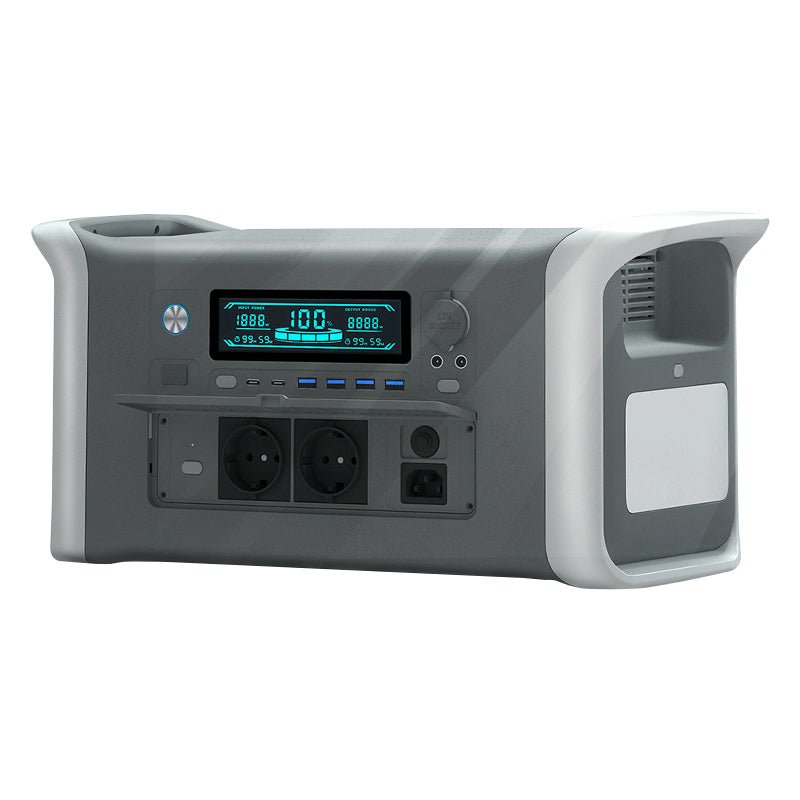If you've got a camping trip of more than a day's duration on your agenda, you'll soon realize that the cell phones and electronic devices you're carrying won't last the entire trip.
Camping in the wilderness will never have a working outlet.
Here we present five ways to charge your cell phone and electronic devices while camping, so that you never have to suffer the embarrassment of a lack of power.
I: Rechargeable Bowls:

Undoubtedly, rechargeable treasure is one of the most popular camping equipment, is easy to use, safe and reliable mobile power.
When choosing portable mobile power (rechargeable treasure), you should choose branded products.
Cheap rechargeable batteries have serious false power markers and often break down, and may not even be able to withstand the harsh environment in camping.
I personally recommend no less than 10,000mAh mobile power, which is enough to cover you for a two-day camping trip. I am now using a 26,800mAh rechargeable power bank with USB-C, which is basically enough for a three-day and two-night camping trip. Another bit of caution is that it's a particularly good idea to use a combination of mobile power and portable solar panels together.
II. Utilize solar energy:

Using solar energy is the cheapest source of energy, and the last thing an empty wilderness needs during the day is sunlight, especially when camping in the summer.
These days, portable solar panels are getting lighter, more affordable, and more efficient than ever before, and can even be hooked up to your backpack for use so that it can be recharged all day long.
I prefer to hang it on my tent so that it faces the sun for optimal performance.
You can charge your devices directly from the solar panel, I usually charge my charging pad first and then use it to charge my electronics at night.
This means that if it's cloudy or raining then I still have a backup power source available.
III.Portable high capacity battery packs:

If you're traveling with several people, or if you have devices that use a lot of power, or even carry a laptop for use in the field, then a high-capacity lithium battery pack portable power supply is the way to go.
This may sound a little crazy, but I've been on camping trips where one of these was used to power a TV and laptop to watch soccer games.
These larger battery packs are much heavier than portable mobile power (rechargeables) (about 3 to 5 kilograms, or more), but they offer AC outlets, 12V ports, and a range of USB connections, and are powerful and ready to power your smartphones, tablets, laptops, cameras, lamps, drones, fans, in-car appliances, and more.
I highly recommend using the camping electricity generator only when you are on a camping trip with minimal hiking or at a central camping location. You really don't want to carry one of these around with you all day. I've been on trips where other people have brought them and I completely understand why they are so popular.
Even then, you still run into low power and can use portable solar panels to recharge them during the day, although the process can be slow (a full charge typically takes 12+ hours).
IV. Charging by burning wood:

Yes, you heard it right, it's the use of burning firewood to charge.
In the wilderness you may have enough wood and dead leaves to use for a fire, then you can opt for a wood stove like the BioLite Campstone, which will allow you to charge your mobile devices, and yes, you can cook while charging your phone with as much fuel as you can find.
The BioLite Campstone stove will come with a 2600mAh battery that uses the heat from the stove to charge it.
You can then use that battery to recharge your electronic devices.
The CampStove woodstove puts out 3 watts of usable electrical power, which is almost always enough to convert firewood into electricity that can be used as a USB charging power source for cell phones and other devices.
V. Car charger:

This is a backup option depending on how far your campground is from your car.
I think anyone with a car and a cell phone nowadays will have a cigarette lighter charger in their car.
Even, many cars come with USB charging ports or wireless charging straight out of the box.
The beauty of this charging method is that you can leave your device charging in the car without having to carry anything extra.
Fortunately, we're in an era of rapid technological advancement, which means that when traveling camping and without any wired power, there are more and more options for charging your electronic devices and cell phones for the safety and convenience of camping.
VI.5 Tips for Extending Battery Life While Camping:
Open source is the best program to ensure that the power is enough, then, the following five tips is a good way to save power for your cell phone and electronic devices to extend the use of time.
Turn your cell phone or other display screen brightness to the lowest possible level.
If you don't need the device for a few hours, don't bother turning it off completely.
3、Turn off your cell phone's vibration, as this feature is very powerful and consumes a tremendous amount of battery power.
4, Are you camping within cell phone signal coverage, if your phone has no signal, turn off cell phone data completely and turn on flight mode.
Don't leave your cell phone and electronic devices with lithium batteries in the sun, it will reduce the performance of the battery and shorten the battery life.
The above is my personal experience of camping over the years, and I'm sure there are many more ways and techniques that I don't know about.









